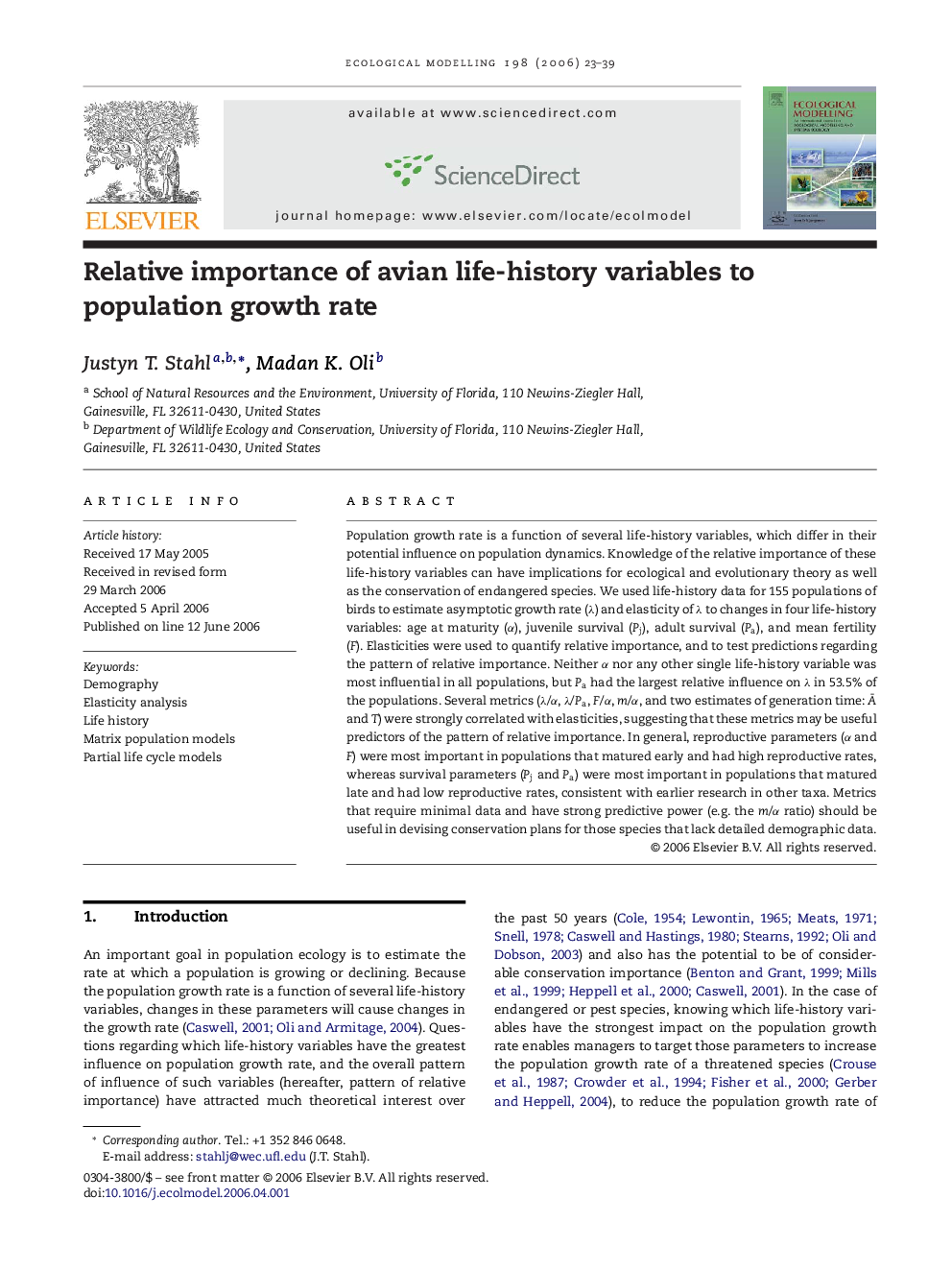| Article ID | Journal | Published Year | Pages | File Type |
|---|---|---|---|---|
| 4378834 | Ecological Modelling | 2006 | 17 Pages |
Population growth rate is a function of several life-history variables, which differ in their potential influence on population dynamics. Knowledge of the relative importance of these life-history variables can have implications for ecological and evolutionary theory as well as the conservation of endangered species. We used life-history data for 155 populations of birds to estimate asymptotic growth rate (λ) and elasticity of λ to changes in four life-history variables: age at maturity (α), juvenile survival (Pj), adult survival (Pa), and mean fertility (F). Elasticities were used to quantify relative importance, and to test predictions regarding the pattern of relative importance. Neither α nor any other single life-history variable was most influential in all populations, but Pa had the largest relative influence on λ in 53.5% of the populations. Several metrics (λ/α, λ/Pa, F/α, m/α , and two estimates of generation time: A¯ and T) were strongly correlated with elasticities, suggesting that these metrics may be useful predictors of the pattern of relative importance. In general, reproductive parameters (α and F) were most important in populations that matured early and had high reproductive rates, whereas survival parameters (Pj and Pa) were most important in populations that matured late and had low reproductive rates, consistent with earlier research in other taxa. Metrics that require minimal data and have strong predictive power (e.g. the m/α ratio) should be useful in devising conservation plans for those species that lack detailed demographic data.
